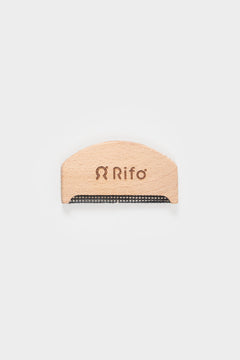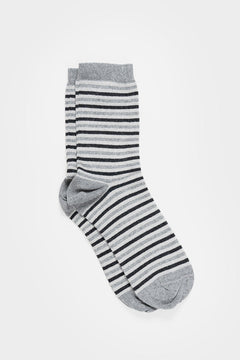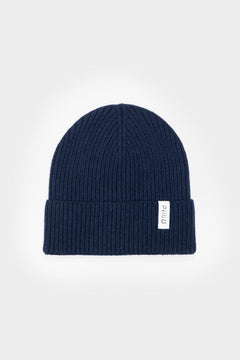Each year, a European throws away 11 kg of clothes.
We talked about this in our former blog article, in which we tried to investigate how many clothes are annually thrown away and how the circular economy can really help their disposal.
As we wrote, compared our thoughts internally and reflected thoroughly, however, we realised that it’s an underlying problem. What could be the real solution to fast fashion?
The truth is that the pollution caused by over-consumption of clothes that are not made to last won’t stop unless we engage in a reduced and better consumption.
How many times have we regretted buying a disposable item of clothing? We weren't 100% convinced, but it was so dazzling in the shop window... We've taken it home but for some reason it's been sitting in the back of the wardrobe, ruined after a few washes, worn very few times or simply gone out of style.
We buy, we wear, we throw away.
We buy, we wear, we throw away.
We buy, we wear, we throw away.

Is there anything we can do to break this mantra and reduce the negative impacts of fast fashion? We do believe we can and that's why we have created a little guideline, a test against compulsive shopping, to check the clothes you already have in your wardrobe or those you are about to buy.
We've tried to highlight those features that make a garment non-durable, in order not to repeat the same mistakes.
Here are 7 questions to help you recognise a disposable garment. You'll also find a test to recognise disposable fashion at the bottom of the page - don't miss it!
1. How many materials does the garment contain?
We often say that the composition of a garment is crucial.durable It should ideally contain as few materials as possible.
This makes a garment more sustainable in terms of circular economy. By choosing a mono-material garment we make it possible to recycle it in the future, extending its life cycle outside our wardrobe too.

A recycled yarn is able to preserve the same features as the starting material if it is pure. This is why our old garment collection services require a 95-100% pure composition in the given old garments.
2. Does the garment contain polyester?
Although it is not smart to demonise synthetic fibres, which can have irreplaceable specific and technical uses, we cannot deny that the presence of polyester in a garment very commonly has many negative implications.
The first relates to the problem of the dispersion of microplastics in each wash. In the washing machine, synthetic fibres release tiny particles of plastic material, which are less than a millimetre in size. In this case, the only solution is to use the Guppy Friend bag, which allows water to enter without letting microplastics out.

Also, when present in large quantities, synthetic fibres such as polyester promote premature ageing of the garment, in particular the formation of pilling, the hated lint (we talked about it in this blog article).

3. How much does it cost?
When a garment is too cheap, we always have to think that someone else has probably paid for it in our place, in terms of job security and probably social justice.
But a very low price may also conceal poor quality materials, carelessly made workmanship and scarcely durable fabrics that are very likely to discolour at the first wash.
It is obviously not easy to figure out the right price for a sustainable garment, a price that can withstand quality workmanship and materials. However, we can do an exercise . Brands usually multiply their production costs by 3 or 4 to create the final price. We can then try to divide the price tag by these numbers. Do you think this is a reasonable industrial cost?

4. Where was it made?
Paying attention to the provenance of a garment helps raising awareness of our own purchases, also by thinking about the context and the people behind the product we’re about to buy.

That said, a necessary and honest premise must be made: a garment that was manufactured in Morocco, Bangladesh, China or Taiwan is not necessarily of poor quality. What is almost certain, however, is that its production cost must have been very low.
That is why question 3 is closely linked to question 2 and leads us to ask again under what working conditions a garment was produced.
5. How fashionable is it?
We've seen plenty of trends that only lasted a few months and ended up in the (it has to be said) skeleton section of our wardrobe.
A section that Vinted, Vestiaire Collective and any other sales platform for private sellers will never be able to completely get rid of.
So every time we are tempted to buy a piece that loudly shouts 'LATEST FASHION', let's ask ourselves: am I going to wear it for more than a season?

6. How many other items in my wardrobe can you use it with?
A wardrobe is like an ecosystem. Each piece should be as efficient and adaptable as possible. We should be able to match it with other garments to create outfits we feel comfortable and satisfied with.
This concept can be summarised by the expression 'cost per use'. Basically, it is a question of amortising the price of a garment by the number of times it will actually be worn.
In the field of ethical and sustainable fashion it is recursively said that on average, most women keep a garment in their wardrobe for 5 weeks, or similar phrases.
We at Rifò are still looking for sources to corroborate these somewhat sensationalistic data. Anyway, although exaggerated, this statement is not completely far-fetched.
Thus, when we are about to buy a garment, we should really ask ourselves whether it will go with all the other stuff we already have.

7. Would you like to pass this item on to a loved one?
Here we come to the most romantic part of this survey about disposable garments. This question alone would be sufficient to justify a purchase or not: will this garment last long enough to leave a memory of me?
In order to ask this question, we should think of those garments that we would never want to part with.
Grandma's very elegant wool coat.
That still-perfect cashmere sweater you received from an uncle.
That beautiful dress that only you saw the value of at a swap party.
It takes imagination. And most of all, it takes the ability to become attached to a piece of clothing and to tell its story.
Ultimately, would you like to test the purchases you've already made or those you would like to make in the future with our disposable fashion unmasking test?








